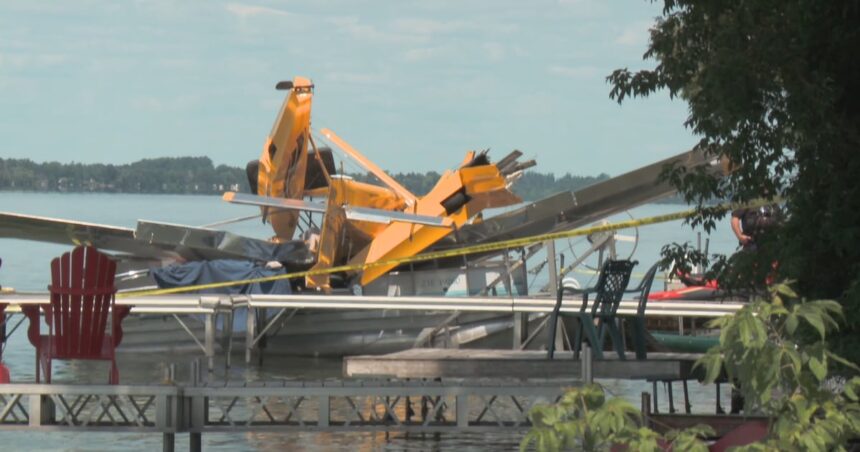In the shadow of several high-profile aviation incidents across Canada this year, questions are emerging about whether the country is experiencing an unusual spike in aerial emergencies. From the dramatic July hijacking attempt at Pearson International Airport to the tragic bush plane crash in northern Ontario last month that claimed five lives, 2025 has already delivered a concerning pattern of aviation incidents that has both passengers and industry insiders on edge.
“What we’re seeing isn’t necessarily unprecedented, but the clustering of these events creates a perception of increased risk,” explains Dr. Helena Ramirez, aviation safety analyst with the Transportation Safety Board of Canada. “When we examine the data carefully, we’re observing specific causal factors rather than a general decline in aviation safety standards.”
The statistics paint a nuanced picture. According to Transport Canada data, reported aviation incidents have increased by approximately 8% compared to the same period last year, though this follows a significant pandemic-related drop in 2020-2023. Aviation authorities emphasize that with air traffic returning to pre-pandemic levels, some increase in absolute incident numbers was anticipated.
Captain Malcolm Reynolds, a veteran pilot with over 30 years of commercial aviation experience, points to several converging factors. “We’re dealing with a perfect storm of circumstances—staffing shortages in ground operations, maintenance backlogs that developed during the pandemic, and increased passenger volume stressing airport infrastructure that hasn’t been adequately upgraded.”
The situation at smaller regional airports presents particular challenges. The fatal crash near Thunder Bay in June highlighted ongoing concerns about maintenance and operational standards at facilities serving remote communities. Indigenous leaders have called for enhanced safety protocols and infrastructure investments in northern regions where air travel remains essential for community access.
“Remote communities depend on aviation as a lifeline,” says Winona Clark, transportation coordinator for the Assembly of First Nations. “When safety is compromised, it’s not just an inconvenience—it’s an existential threat to community wellbeing and economic sustainability.”
The attempted hijacking at Toronto Pearson on July 3rd—where a passenger attempted to breach the cockpit during a domestic flight—has raised additional questions about security protocols. While quickly contained by air marshals, the incident prompted Transport Minister David Chen to announce a comprehensive review of in-flight security measures on Canadian flights.
“Security protocols are constantly evolving,” notes former RCMP intelligence officer Simone Trudeau. “What’s concerning is that this incident exposed gaps in passenger screening that we thought had been addressed after previous security reviews. It suggests we need more consistent implementation of existing measures, not necessarily new ones.”
Industry analysts observe that the aviation sector’s rapid post-pandemic expansion may be outpacing safety infrastructure development. “Airlines are aggressively expanding routes and frequencies to recapture market share,” explains Alisha Patel, senior business analyst at Desjardins Securities. “This creates pressure to maximize aircraft utilization, sometimes at the expense of maintenance windows and crew rest periods.”
Transport Canada has responded by announcing enhanced ramp inspections at major airports and additional oversight for carriers operating in remote regions. The agency has also committed $240 million for improved weather monitoring systems and navigation aids at smaller airports—infrastructure improvements long requested by pilots and safety advocates.
For passengers, the apparent increase in incidents raises legitimate concerns. Anxiety about flying, already common among travelers, can be exacerbated by news of crashes and security breaches. Mental health professionals recommend perspective when assessing risk.
“Air travel remains statistically among the safest forms of transportation,” reassures Dr. James Wilson, clinical psychologist specializing in travel anxiety. “But that statistical reality doesn’t always align with our emotional responses to dramatic incidents. The key is acknowledging concerns while recognizing that aviation’s safety record is built on continuously learning from and addressing potential risks.”
As investigations into this year’s incidents continue and political pressure mounts for enhanced safety measures, the question remains: are we witnessing a temporary cluster of unrelated incidents, or signs of systemic issues requiring deeper intervention in Canada’s aviation sector? With the busy summer travel season peaking, regulators, airlines, and passengers alike await answers that could reshape the future of Canadian air travel safety.

























